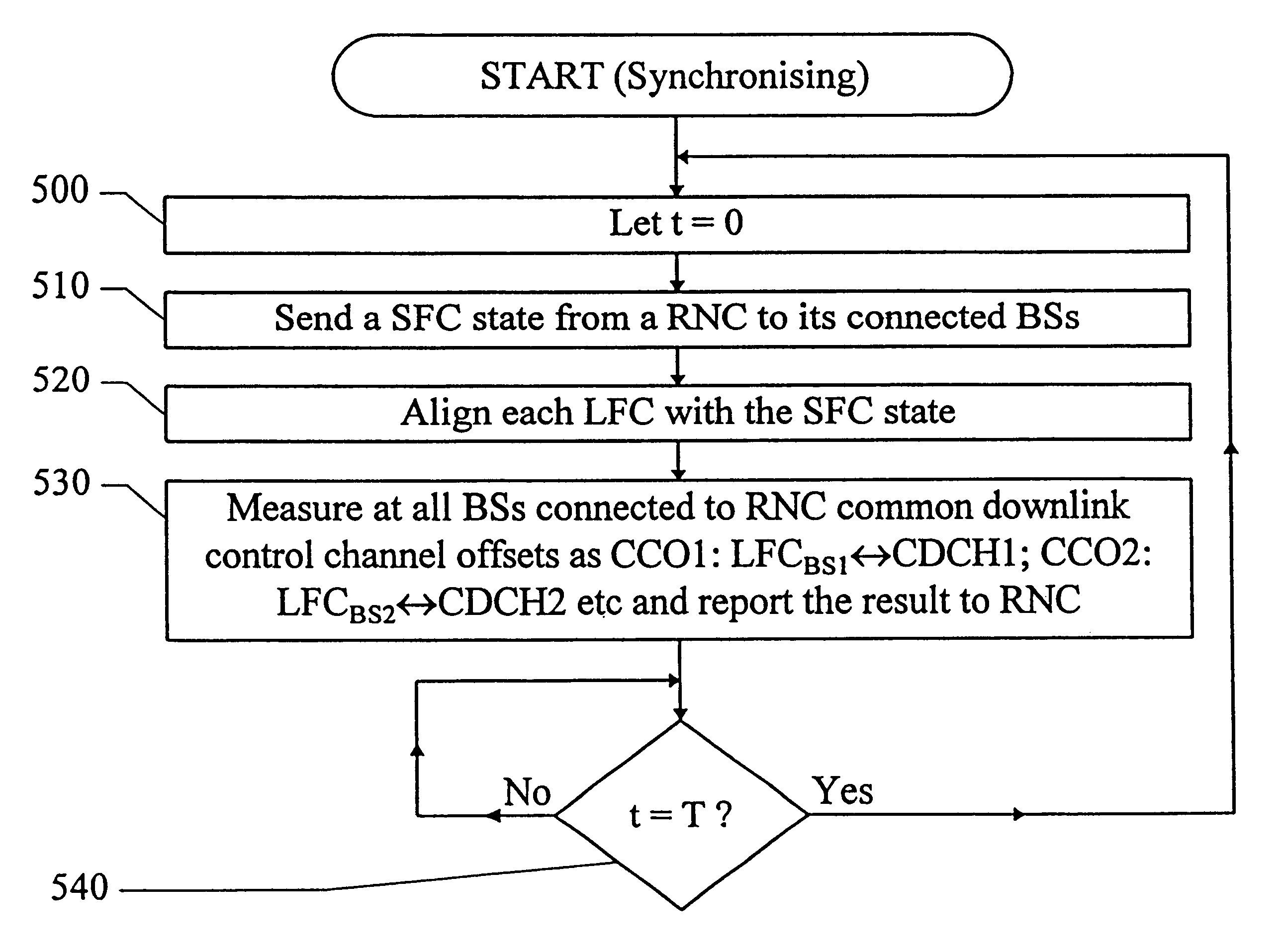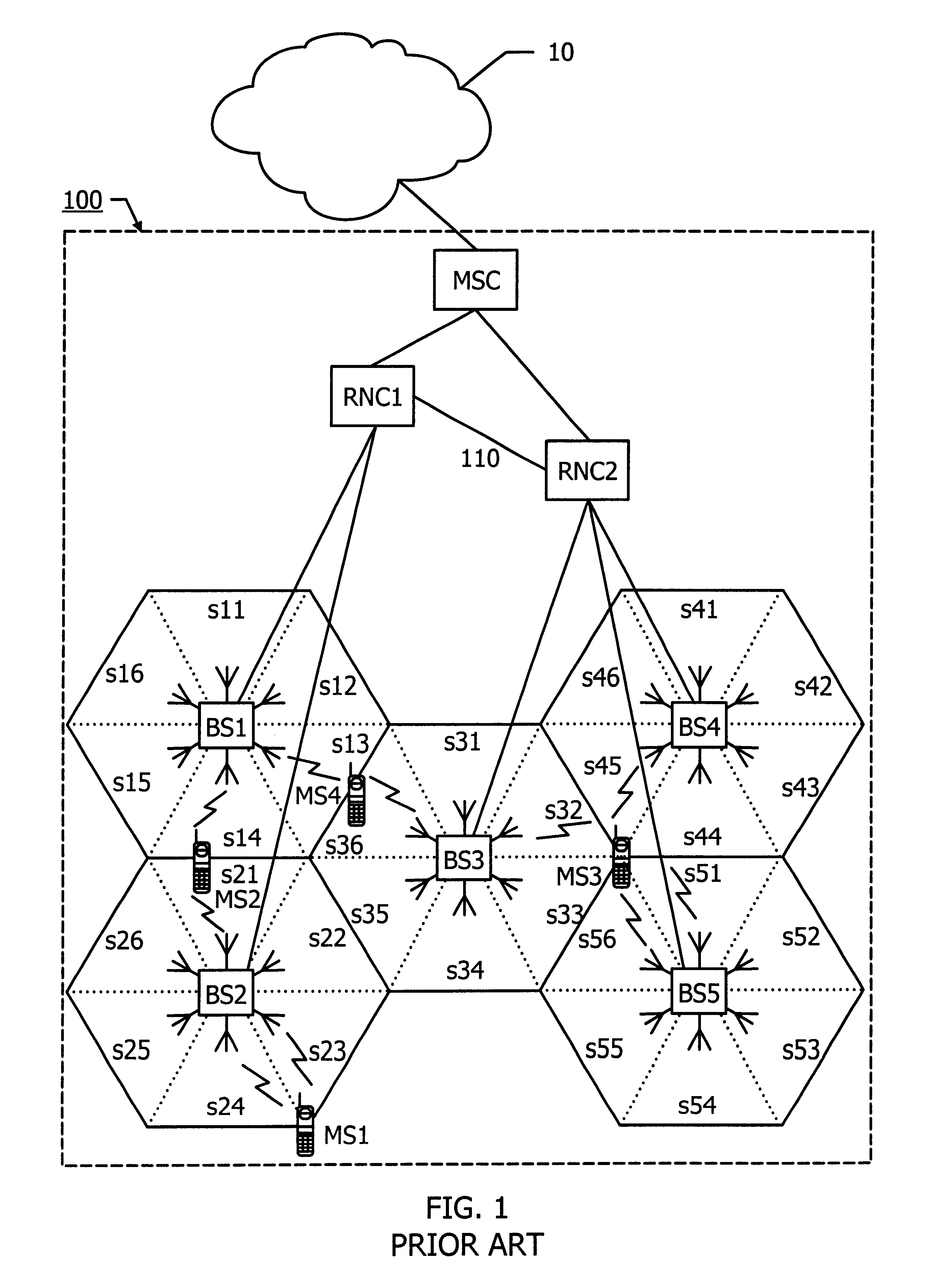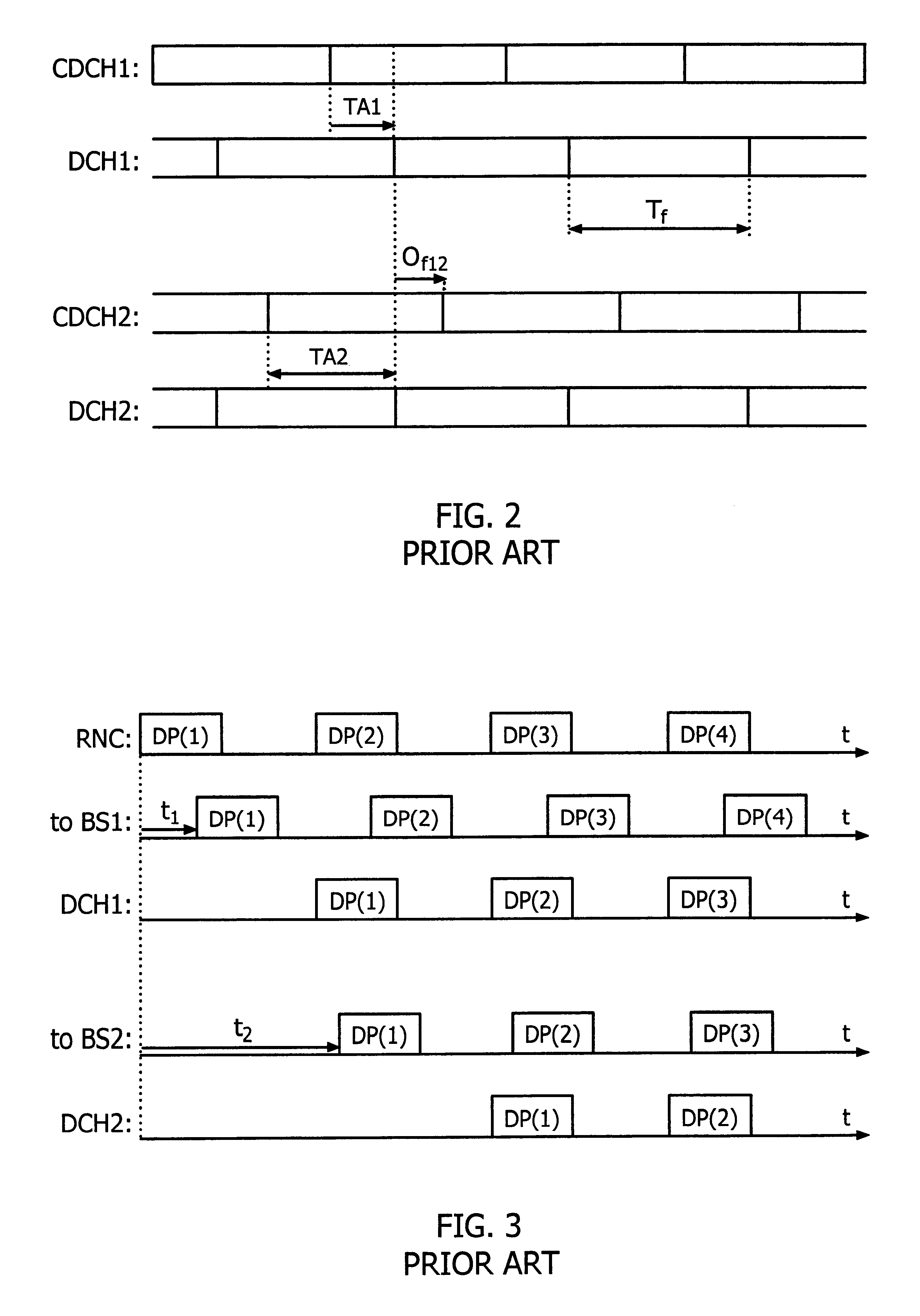Methods and arrangements in a radio communications system
a radio communication system and method technology, applied in the direction of synchronisation arrangement, synchronisation signal speed/phase control, site diversity, etc., can solve the problem of high capacity limits of cdma-based cellular systems, no solution to how these transmissions should be controlled, and documents that do not teach how to achieve synchronised communication between multiple base stations and a specific mobile station. , to achieve the effect of simple rake receivers, low average round-trip delays, and reduced complexity
- Summary
- Abstract
- Description
- Claims
- Application Information
AI Technical Summary
Benefits of technology
Problems solved by technology
Method used
Image
Examples
Embodiment Construction
In FIG. 1 is shown a per se previously known CDMA cellular radio communications system 100 connected to a fixed communications network 10, like for instance the PSTN.
Naturally, the fixed communications network 10 can be any kind of network which is adapted to the type of data being transmitted through the CDMA cellular radio communications system 100. If, say, packet data is communicated in the CDMA system 100, the fixed network 10 is preferably a PSPDN (Packet Switched Public Data Network), a network operating according to IP (Internet Protocol), an ATM-network or a frame relay network.
A node MSC (Mobile services Switching Centre) connects the CDMA cellular radio communications system 100 with the fixed communications network 10. The node MSC may in particular be a so called Gateway Mobile services Switching Centre, if has connection with a communication network outside the CDMA cellular radio communications system 100. The node MSC is via, e.g. ATM-connections, in further contact ...
PUM
 Login to View More
Login to View More Abstract
Description
Claims
Application Information
 Login to View More
Login to View More - R&D
- Intellectual Property
- Life Sciences
- Materials
- Tech Scout
- Unparalleled Data Quality
- Higher Quality Content
- 60% Fewer Hallucinations
Browse by: Latest US Patents, China's latest patents, Technical Efficacy Thesaurus, Application Domain, Technology Topic, Popular Technical Reports.
© 2025 PatSnap. All rights reserved.Legal|Privacy policy|Modern Slavery Act Transparency Statement|Sitemap|About US| Contact US: help@patsnap.com



